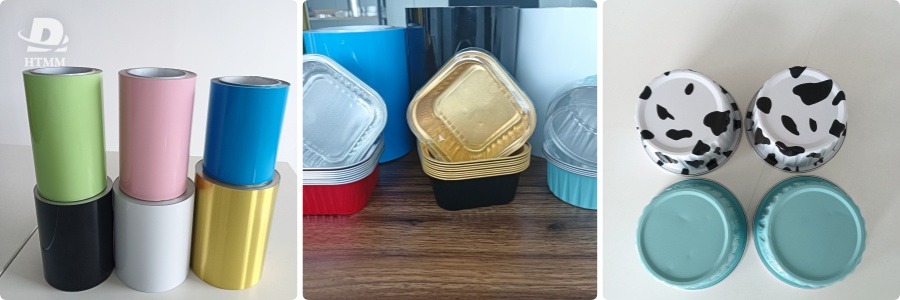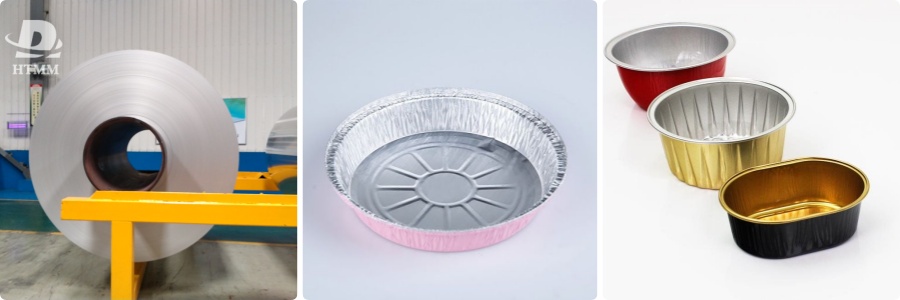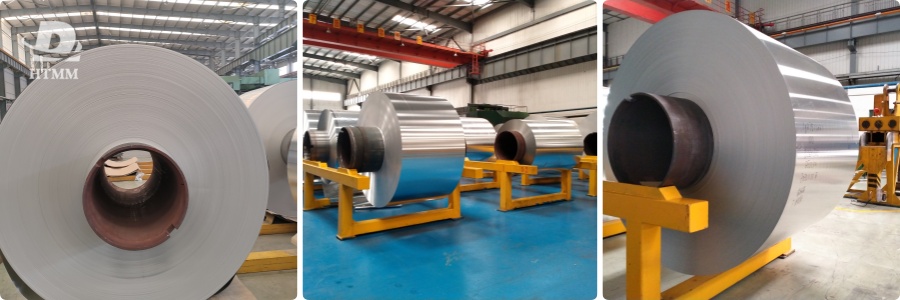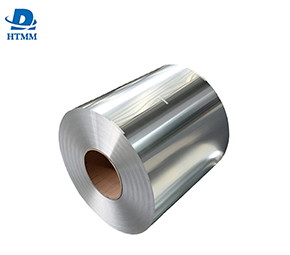8011 Alloy

Our premium grade foil is made from 8011 H24 aluminum foil. This alloy is very pure, containing at least 99% aluminum by weight. The very low levels of other elements make 8011 ideal for direct food contact applications where purity is critical. Some key attributes of 8011 alloy include:
Excellent corrosion resistance. As a highly refined grade of aluminum, 8011 forms a very tight, impervious oxide layer on its surface that protects it from degradation. Aluminum Foil Container Raw Material. This is important for maintaining the integrity of foil used for food packaging.
Low levels of impurities. 8011 contains very small amounts of other elements like copper, iron, silicon and zinc. This pure composition adheres to strict food safety regulations regarding the impurities allowable in direct food contact materials.
Bright aluminum appearance. The high aluminum content gives 8011 its signature lustrous, bright silver appearance. This looks appealing for food packaging where aluminum foil is visible.
Good formability. 8011 can be easily rolled, stamped, or otherwise formed during manufacturing without cracking or tearing. This allows for consistency in thickness and the shaping of foil into containers, wraps and other forms.
While 8011 provides the best combination of purity, food safety and durability, its high aluminum content means processing requires more energy and results in a higher price point compared to other alloys. However, for applications where the highest purity is necessary, such as baby food pouches or meat wraps, 8011 is the preferred choice of many customers.
8006 Alloy

A step down from 8011 in purity but still meeting strict food contact regulations is 8006 alloy. Typical compositions contain at least 98% total aluminum along with small amounts of magnesium, manganese, chromium or zirconium. Some benefits of 8006 include:
Excellent corrosion resistance through formation of a tightly adhered oxide layer.
Complies with global purity standards for food contact like FDA regulations in the United States.
Forms more easily than pure 8011 due to additions of magnesium and manganese that enhance workability. This alloy is easier to roll tightly and shape.
Lower raw material cost compared to 8011 while still offering exceptional durability for food packaging applications.
Many HTMM customers choose 8006 H24 aluminum foil for a variety of foil-based food containers where cost is a factor but purity and performance must not be compromised. Examples where 8006 often finds use include foil lid seals, freezer wrapping, certain baking dishes and other applications not involving direct exposure to high acid foods.
3003 Alloy

The most widely used and economical aluminum foil alloy grade is 3003. Compositions typically contain 93-96% aluminum along with 1-3% manganese, 0.15% copper and 0.6% magnesium. Key attributes of 3003 H24 aluminum foil include:
Good corrosion resistance through natural oxide layer formation, though not quite as impervious as 8011 or 8006.
Meets purity requirements of various international food contact standards.
Excellent formability—the lower aluminum content along with alloying additions make 3003 very easy to roll, shape and form without damage.
Lower raw material price point than 8011 or 8006, making 3003 suitable for high-volume, cost-sensitive applications.
While not advised for direct contact with high acid foods, 3003 alloy is perfectly suitable for a wide variety of food packaging needs at a reasonable price point. Common uses include household foil, baking/cooking foils, foil wrapping for baked goods and candy wrappers. The good corrosion resistance and formability allow quality food contact performance while keeping costs low.
Choosing the Right Alloy
In summary, aluminum foil producers must carefully consider alloy composition dependent on the intended application and customer needs. 8011 provides the highest level of purity but also the highest material cost. 8006 offers near-8011 performance at a lower price point. And 3003 maintains acceptable purity while keeping costs very low for high-volume packaging.
Here are some general guidelines for selecting the appropriate alloy grade:
8011 alloy - premium grade ideal for baby food pouches or high acid contact where absolute purity is required.
8006 alloy - excellent all-around performance an purity. Well suited for lidding foils, meat/cheese wraps and other direct contact uses.
3003 alloy - economical choice for non-critical applications not involving direct high acid contact. Ideal for oven bakeware, wrapping, candy wrappers.
Of course, the final choice also depends on factors like budget, processing capabilities and regulatory environment. At HTMM, we take great care to thoroughly understand our customers’ unique needs so we can recommend the best aluminum foil alloy and grade to meet their requirements. High quality raw materials are the foundation for delivering reliable, sustainable and food-safe packaging solutions.
In conclusion, aluminum foil producers must choose alloy compositions carefully based on the intended application, performance parameters, budget and regulatory landscape. The three main alloys - 8011, 8006 and 3003 - each offer their own mix of purity, formability and cost advantages. By understanding these key differences, companies like HTMM can recommend and supply the right foil material to ensure optimal results and compliance for our customers’ diverse packaging and food contact needs. Contact us today to discuss your aluminum foil requirements.





